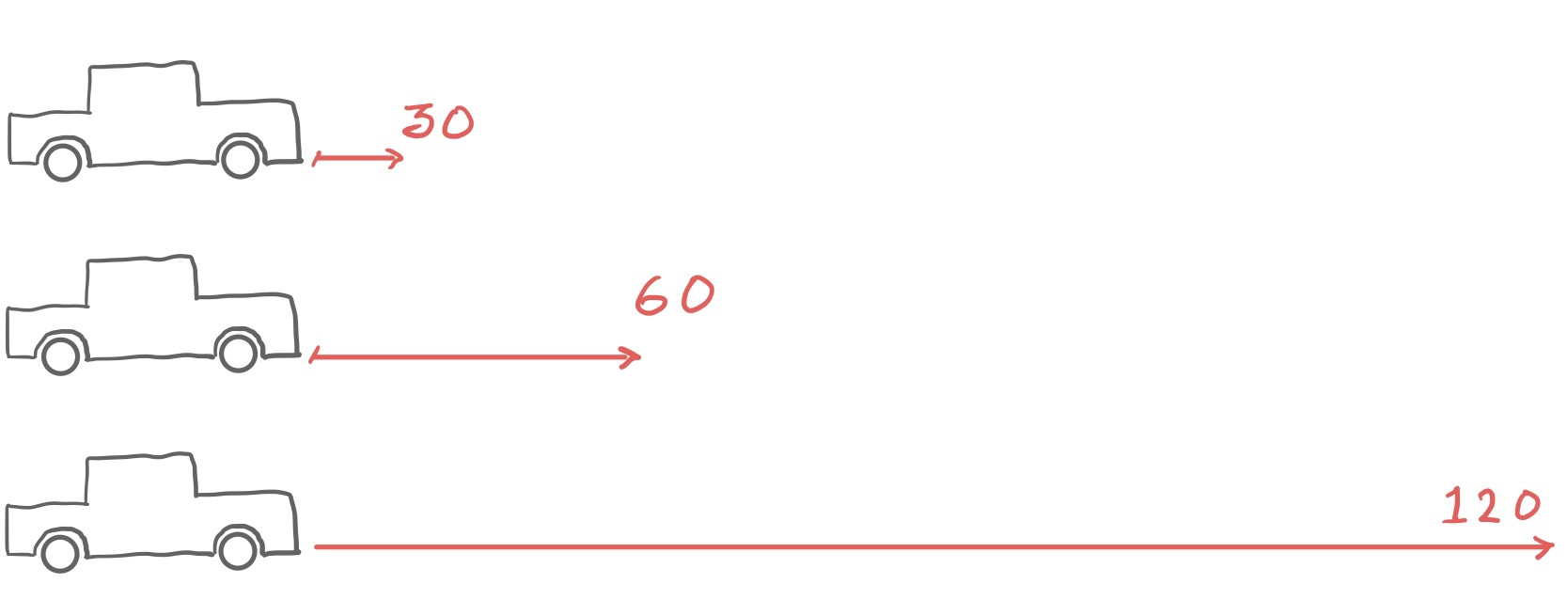3.7 Maximum speed
Created: 2023-10-12 22:12
How fast are you allowed to drive in The Netherlands and what does breaking the limits entails?
It depends, among other things, on where you are driving: inside or outside built-up areas.
A built-up area is an area where more people live together, such as a village or a city.
The maximum speed is also determined by what traffic signs indicate along the road. For example, there might be limited speeds outside built-up areas when construction is taking place in the road.

👆 A sign indicating the beginning of a built-up area.
In built-up areas
#todo: disambiguate moped 👇
| Roadway | Cycle/moped path | Property | |
|---|---|---|---|
| Motor vehicles | 50 | ||
| Moped | 45 | 30 | |
| Disable vehicle with engine * | 45 | 30 | |
| Moped car | 45 | ||
| Moped | 25 | 25 | |
| Agricultural or forestry tractor or motor vehicle with limited speed ** | 25 or 40 | ||
| All | 15 |
* Disable vehicles can also drive on the sidewalk, the maximum speed there is 6kmph.
**On roads within built-up areas, the maximum speed of 25kmph might be increase to 40kmph on roads where no mixing of smoother/highway traffic can take place.
Higher or lower maximum speed
The table shows the generally applicable minimum speeds. However, a higher or lower speed limit may sometimes apply on a road. You can see this front he traffic signs or matrix signs along the road.
Outside built-up areas
If you leave a city or village, then you are outside built-up areas. Theere you can drive on a normal road (roadway), but also on a highway or freeway.
| Roadway | Bicycle/moped/bike path | Highway (autoweg) | Freeway (autosnelweg) | |
|---|---|---|---|---|
| Passenger car, motorcycle and comercial vehicles, camper and trike (three-wheeled motor vehicle) with a mass less than 3500kg | 80 | 100 | 130 * | |
| T-100 bus | 80 | 100 | 100 | |
| Passenger car, motorcycle and comercial vehicles, camper and trike (three-wheeled motor vehicle) with a mass MORE than 3500kg | 80 | 90 | 90 | |
| Moped or disabled vehicle with engine | 45 | 40 | ||
| Moped car | 45 | |||
| Moped | 25 | 25 | ||
| Agricultural or forestry tractor or motor vehicle with limited speed | 40 | |||
| Camper, company car, truck, and bus (except T-100) with a mass MORE than 3500kg | 80 | 80 | 80 |
* Freeway: speed limit differs between day and night. In The Netherlands you are allowed to drive a maximum speed of 100kmh on all freeways during the day (from 6am to 7p). At night (from 7pm to 6am) you are allowed to drive 130kmh on many freeways, unless otherwise stated.
Adjusted maximum speed
In some roads, the maximum speed sometimes can be adjusted (temporarily) to a different limit. For example in traffic jams, when there are accidents in the highway and a lane is blocked, etc.
The adjusted speed is indicated by traffic signs or matrix signs.
An adjusted speed takes precedence over the normally applicable maximum speed!!!
Pay extra attention when there are speed adjustments. It is usually due to some special situation or anomaly, like confusing bend, a difficult intersection, roadworks, or a traffic jam.
The following signs indicate the adjusted speed zone is over.

The speed limit also resets after a paved road (?) or an intersection. 👀
Driving too fast
If caught driving more than 50kmph above the limit, the license is taken immediately and sometimes the car as well.
Stopping on time
Driving too fast and therefore not being able to break in time is one of the main causes of all traffic accidents. (the definition of accident, basically)
Part of safe driving is being able to stop safely at any time. This requires you to be able to see across the road and stop your car without endangering yourself an others.
Stopping distance
To be able to stop safely, three factors play a role:
- Your speed
- Your reaction time
- The breaking deceleration
Together, these three factors determine your stopping distance. This is the distance your car travels from the moment you want to break until you actually come to a full stop.

reaction time + speed = reaction distance
Your reaction time is the time between the situation you see in front of you and the moment you step on the break. The average response time is 1 second. The faster you drive, the longer the reaction distance becomes.
Speed also influences the breaking distance. It grows quadratically compared to speed.
speed * 2 = breaking distance * 4

2 second rule
From the moment the car in front of you passes a radio sign, lamppost, roadside pole, or other point of reference, you can’t out loud ‘twenty-one, twenty-two’. After saying these two numbers, I have already passed the same reference point? Then you keep too little distance between you and the vehicle in front.

9 reasons to keep extra distance
Although the 9 second rule is a good method to keep a safe distance between you and the moving traffic in front, there are several reasons to keep extra distance on top of that.
- Driving in busy areas, with a lot of people.
- The conditions of the road are suboptimal (dirt road, holes on the road, new road surface, cattle grids, bricks, etc.)
- Harsh weather conditions (snow, rain, sleet)
- Chance of strong crosswinds
- Poor visibility (fog, snowfall, smoke)
- A lot of traffic
- The conditions of the car are not optimal. For example, worn out tires
- Carrying heavy weight on the car, thus the breaking distance is longer.
- Towing another car or a trailer.